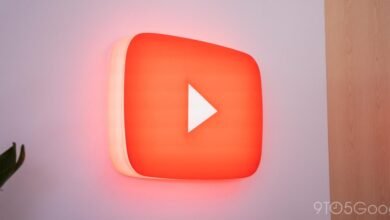YouTube’s TV Evolution: What’s Changing Your Screen

▼ Summary
– YouTube’s TV app is undergoing major changes to resemble paid streaming services like Netflix with large banner images and organized content.
– Videos will now be organized into seasons and episodes, allowing viewers to binge-watch and resume where they left off.
– YouTube accounts for 12.6% of all TV viewing in the US, matching the combined viewership of Netflix, Disney Plus, Hulu, and ESPN Plus.
– The platform is expanding its “Shows” feature to creators, blurring lines between professional and user-generated content with more episodic storytelling.
– YouTube has increased thumbnail upload limits to 50MB for 4K display after a decade, reflecting a renewed focus on TV experience after years of mobile prioritization.
The YouTube application on your television is undergoing a significant transformation, making it resemble premium streaming platforms more closely than ever before. When you launch the app, you’ll encounter large, high-definition banner images promoting the newest episodes from channels you follow, rather than a disorganized grid of small thumbnails. These visuals appear sharper because YouTube has increased its thumbnail upload limits for the first time in ten years. Additionally, a growing selection of channels will present their videos in a structured, season-and-episode layout, encouraging viewers to binge-watch series just as they do on services like Netflix.
According to Kurt Wilms, YouTube’s senior director of product management, this new organization means viewers can move seamlessly from one episode to the next and easily resume watching where they left off. This shift responds to YouTube’s expanding presence in the living room, where users now watch over a billion hours of content on TV screens daily. In the United States, YouTube commands 12.6 percent of all television viewing time, a share comparable to the combined totals of Netflix, Disney Plus, Hulu, and ESPN Plus. Essentially, YouTube has become a dominant form of television and is now updating its interface to reflect that role.
The introduction of shows to YouTube channels has been in development for several years. It originated from the platform’s work on Primetime Channels, a feature designed to integrate third-party subscription services directly into the YouTube app. Wilms notes that while creating polished show pages for Primetime Channels, the team recognized that independent creators would also benefit from this type of presentation. The distinction between professionally produced series and user-generated content continues to blur. Whether the program is a major studio production or a creator-led series like Michelle Khare’s “Challenge Accepted,” the viewing experience is becoming uniform, and audiences frequently switch between both types of content.
As more viewers watch YouTube on television, creators are adapting by producing longer, more cinematic, and episodic content. There is a noticeable trend toward ongoing story arcs and higher production values, with 4K video uploads increasing by 35 percent compared to the previous year. Video podcasts represent another area of rapid growth, with over a billion people tuning into podcasts on YouTube monthly. A substantial portion of that consumption, over 400 million hours each month, occurs in the living room. Wilms describes podcasts as the modern equivalent of late-night talk shows, and accordingly, YouTube now formats podcasts with the same show-style treatment given to other series.
These updates, which include the new Shows format, a redesigned TV home screen, AI upscaling for lower-resolution videos, and streamlined TV shopping features, signal a renewed focus on the big screen experience. For years, YouTube appeared to concentrate its innovation on mobile and Shorts, allowing the TV app to stagnate. A telling example was the long-standing restriction that limited thumbnail uploads to 2MB, with images automatically rescaled to 720p resolution. Wilms confirmed that the platform had not updated its thumbnail handling in over a decade. Now, creators can upload thumbnails up to 50MB, and these will display in 4K on compatible TVs.
This seemingly minor adjustment is part of a larger narrative about YouTube’s somewhat accidental dominance in television. Industry observers have noted that the platform’s rise to becoming the most-watched TV service was largely driven by shifts in user behavior rather than a deliberate corporate strategy. As one executive remarked, YouTube achieved this massive reach “without even trying.” Now, with these comprehensive updates, we are witnessing what happens when YouTube begins to intentionally design for the television audience.
(Source: The Verge)

